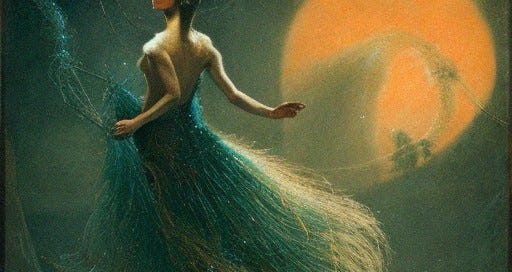Vanda Scaravelli
A new joy in yoga has been ignited in me by discovering the Italian yoga teacher Vanda Scaravelli.
A concert pianist, born in Florence in1908, she discovered yoga in her forties when Iyengar came to stay at her chalet one summer to teach her and her close friend Krishnamurti. This resulted in both Iyengar and Desikachar becoming regular summer visitors. She developed her own however, which though precise was strikingly different from that of Iyengar yoga. She went against much conventional yoga wisdom and had ideas about the spine that were central to her style of yoga. One also gets the impression taht yoga was very much a thing of beauty to her.
Vanda only taught students individually and had relatively few students, but as her students were all yoga teachers, you can still find many hints of her legacy. I’ve been reading Notes on Yoga, written by Diane Long and Sophy Hoare, two of her students, about her work and there is something wonderful and different about her approach to yoga.
I have always had an uneasy relationship with yoga: it has always felt like something I ‘should’ do, because I find that if I don’t then my body starts to feel horribly stiff and immobile. I had been doing yoga out of fear rather than love. But I have started instead to feel instead inspired by yoga. It feels now like a way to awaken the body and to express myself.
The Alexander Technique
I have been hesitating about whether to write about The Alexander Technique, even though I have just finished a course of lessons.
I think this is because I’m not sure I completely understand it. I know there is something interesting in there though. I think part of my hesitancy is that much of teaching is indirect. Sometimes I’m not quite sure how much I have learned or not learned. I came to The Alexander Technique through Michael Ashcroft’s writings and ideas and also through talking to friends, rather than as a result of being in extreme chronic pain, so I don’t have as clear a marker of something having changed as somebody might do if their pain has stopped. I feel like I carry myself slightly differently though, in a lighter way, and my mild knee pain (in positions like Pigeon in yoga, so not an everyday problem but one that still bothered me) has gradually subsided. I do still feel a slight ‘wonkiness’ in my pelvis however.
The Alexander Technique is about the mind as much as the body and the best short description I have found of it at that level has been Jon Carpmeal’s unassuming book Wake Up & Notice with Interest where he talks about ‘The Four Corners’. One of the most fundamental concepts of The Alexander Technique is that of ‘Inhibition’, akin to the idea of ‘Responding rather than Reacting’ to stimuli, and something clicked for me about Inhibition reading about the Four Corners.
I also discovered Penelope Easten’s book The Alexander Technique: Twelve fundamentals of integrated movement. Penelope was taught by Miss Goldie, a remarkable character who worked alongside F. M. Alexander for 30 years and lived with him when he was in London. Her approach was quite different from that of most teachers today. There is so much in Penelope’s book and the videos that go with it that I don’t even know where to start talking about it: every chapter feels like some sort of paradigm shift. I feel I have only started to touch the edges of what is in there. Most books I have seen on The Alexander Technique essentially tell you that you need to have lessons, but this one is genuinely trying to teach it as well as possible without that requirement.
Brazilian Jiu Jitsu
In utter contrast to all the slow, intuitive individual movement of yoga and tai chi, I’ve also started doing Brazilian Jiu Jitsu this year a couple of times a week.
Brazilian Jiu Jitsu is incredibly fun. I hadn’t realised how fun it would be. It is a brilliant counterpoint to the other movement I do - far more yang. There’s a decisiveness that you need and I’m exhausted by the end of a session.
Other than tai chi, it is my first martial art and my image of martial arts was one of them being very formal and regimented. But it hadn’t occurred to me that this was Brazilian Jiu Jitsu not Japanese Jiu Jitsu. So we line up in grade order at the end of the lesson, but then hug everybody in turn. When it is time for us to practice something in pairs, the instructor says ‘one two’ and we all clap. It is a lovely friendly welcoming atmosphere.
I am in the interesting position of being the smallest and lightest person in the room. I am very aware that I can’t rely on strength and don’t have any room for error in technique. But it has also also given me an incentive for increasing my strength, because even with correct technique, strength can sometimes help. I’ve noticed that some of the principles are starting to sink in, just the tiniest amount, so when I’m in a situation where I haven’t learned specifically what to do yet, I sometimes find options that wouldn’t have previously occurred to me. I have been discovering a side to myself that I didn’t realise I had. At the moment it is an exciting adventure into a new territory of movement.



